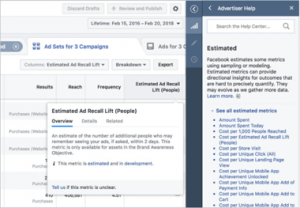The UpTake: Why do CEOs like Mark Zuckerbeg and Arianna Huffington insist on personally vetting every new hire? If the head coach doesn’t have a hand in picking the players, then it’s practically impossible build an all-star team.
In January 1997, former New England Patriots head coach Bill Parcells departed the team he’d led for years.
By snubbing him during the season draft, Parcells felt Patriots owner Robert Kraft had squashed his ability to lead. “If they want you to cook the dinner,” Parcells told The New York Times, “at least they ought to let you shop for some of the groceries.”
Was Parcells right to leave? The Patriots were winning under his leadership, but as a CEO, I understand why Parcells felt hamstrung without the final say in recruitment. Kraft must have understood it, too, considering the latitude he gives current coach Bill Belichick to pick incoming Patriots. Belichick’s recruitment savvy has led the Patriots to six Super Bowl trips and four wins and has built one of the greatest dynasties in sports history.
If you don’t believe the same applies to business, consider this: How do you think Facebook has become a mecca for tech talent? Well, it isn’t luck. CEO Mark Zuckerberg devotes nearly half his time to hiring. He even takes candidates on walks to get acquainted and to pitch the company to them.
Your team is its players. Coaches can strategize all day, but execution happens on the field. And because 87 percent of organizations cite culture as a top challenge, passive candidate sourcing doesn’t just risk dissatisfied clients; it can cause players to quit, too.
Lead Your Team to the Lombardi
With football in full swing, it’s time to think about your team’s upcoming season. And if you don’t personally recruit, vet, and draft your players, then you’re bound to leave holes in your lineup.
For me, this “aha” moment came when my organization was conducting a legacy platform migration. When an ill-qualified team put the project eight months behind schedule, I knew it was time to rethink recruitment.
Why’d we hire those players at all? In a word: urgency. Fast growth dictated our hiring, and with few vetting procedures in place, we couldn’t easily tell the good from the bad. My involvement in recruitment has slowed the process a bit, but it’s dramatically improved the quality of our team.
Hire a Touchdown-Worthy Team
While you might be the first hiring-focused CEO in your network, you’re hardly alone. Ariana Huffington, founder of The Huffington Post, famously grilled each and every new hire.
Here’s how to make talent acquisition your company’s trademark play:
1. Get in the game. If you’ve got grit, then consider becoming your organization’s full-time recruiter. One quarter, I devoted 90 percent of my time to hiring to let the team focus on execution. That might sound like a lot, but what’s more important than finding the right people to maintain and grow your company? It’s not glamorous, but you know your company’s needs best.
2. Rewrite your playbook. No game is won on a single play. My company divides the interview process into four steps inspired by “Topgrading,” my go-to hiring playbook:
• Screen out amateurs. Short and simple, this 20- to 30-minute phone interview is all about the threat of a reference check. Ask the candidate to name his last supervisor, then ask how the manager would rate him on a 1-10 scale. Be clear that you’ll speak to his former boss. Candid, unwavering answers show confidence in prior work.
• Review past plays. Past performance is the best indicator of future success, so next spend a couple of hours digging chronologically through the candidate’s employment history. Was the candidate pushed or pulled from each prior role? A-players are nearly always pulled to better opportunities. Through this longer interview, you should also get a sense of whether the interviewee would fit with your company culture.
• Keep score. In this third, tactical interview, frame the job description in terms of expected performance a year after the hire. By introducing a recruit to the position’s KPIs, you establish a baseline for later performance measurement, should you choose to sign the player.
• Do your homework. Finally, contact at least four references per candidate. It’ll save you from finding out later what prior coaches have already learned.
3. Pass the whistle. Once you’ve mastered the draft, let supporting coaches take over. Move from spending 90 percent of your time on recruitment to no less than 40 percent. You still get the final signoff, but trust your team to identify talent with your system.
Of course, no recruitment process can ensure every player is a star performer. Beware, too, that lengthy vetting means you might lose a great candidate or two along the way.
But those are the realities of recruitment. It’s always better to commit the necessary time and effort to build an all-star squad than to reach or rush in hiring players who eventually may end up on the waiver wire. And if the head coach doesn’t have a hand in picking the players, then he’s never going to lift that Lombardi trophy.
Business & Finance Articles on Business 2 Community(31)








